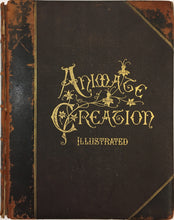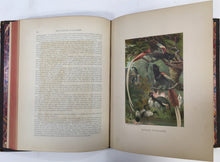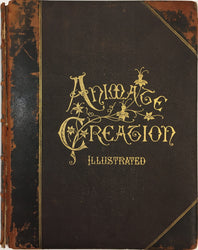J.G. Wood. Volume II. Birds. Animate Creation; Popular Edition of "Our Living World," A Natural History.
New York: Selmar Hess, 1898. Folio. Bound in half leather with pebble grained buckram boards; gold stamping on spines and covers. Interiors complete with few flaws and unusually slight browning. Tall, heavy volume. Contains 10 chromolithographic plates by Louis Prang and many uncolored wood engravings. Front cover somewhat loose.
This fine natural history book offer a vast compendium of information from leading American biologists and an outstanding presentation of art depicting life on earth. The book has beautiful chromolithographs by Louis Prang and company mounted on separate pages, in addition to full-page wood engravings, and innumerable wood engravings throughout the text. Such works by American artists and scientists are quickly becoming scarce as those in less durable bindings have fallen apart and the prints appear for sale as separate entities. This attractive example of book publishing at the end of the nineteenth century is a tribute to American art and science.









